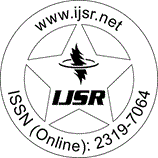Downloads: 136
India | Pharmacology and Toxicology | Volume 8 Issue 5, May 2019 | Pages: 721 - 722
Phenytoin Induced Dress (Drug Reaction with Eosinophilia and Systematic Symptoms Syndrome): A Case Report
Abstract: Drug reaction with eosinophilia and systematic symptoms (DRESS) syndrome, also referred to as drug-induced Hypersensitivity syndrome, is a distinct, potentially life-threatening adverse reaction. Clinical manifestations include rash, fever and visceral organ involvement, most commonly Hepatitis. The mortality rate associated with DRESS syndrome is approximately 10 %, the majority due to fulminant liver. The pathogenesis of DRESS is complex and not fully understood. The syndrome develops 2 to 6 weeks after initiation of administration of a special drug. The cases in which the culprit drug is not obvious, clinicians must use their clinical judgement to select which medication to discontinue. The benefit of therapies aimed at accelerating the elimination of the causative drug deserves further studies. In the absence of well established therapy, primary and secondary prevention have a key role in the management of DRESS syndrome.
Keywords: Dress syndrome, Adverse drug reaction, Management, Hypersensitivity, life threatening, rash, organ involvement, culprit drug, Therapy
How to Cite?: Vageeshwari Devuni, "Phenytoin Induced Dress (Drug Reaction with Eosinophilia and Systematic Symptoms Syndrome): A Case Report", Volume 8 Issue 5, May 2019, International Journal of Science and Research (IJSR), Pages: 721-722, https://www.ijsr.net/getabstract.php?paperid=ART20197659, DOI: https://dx.doi.org/10.21275/ART20197659
